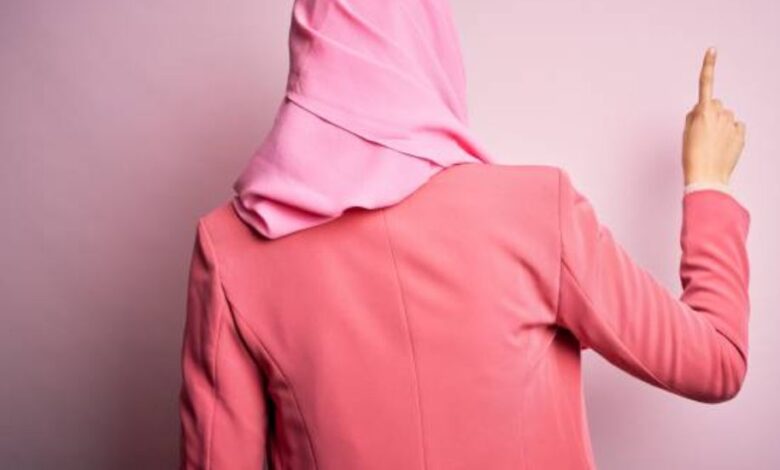Understanding the “Pink Hoodie Hijab Fight”: A Complex Incident of Violence and Sensitivity

The “Pink Hoodie Hijab Fight” refers to a viral incident involving a physical altercation between two individuals, one wearing a pink hoodie and the other a hijab. Captured on video and widely disseminated across social media platforms such as Twitter, Instagram, and TikTok, this fight quickly became a trending topic, drawing attention to various societal issues, including Islamophobia, gender-based violence, and the role of social media in amplifying real-life events. This article explores the details of the incident, its broader implications, and the ongoing discussions it has sparked.
The Incident: What Happened in the “Pink Hoodie Hijab Fight”?
The altercation, known as the “Pink Hoodie Hijab Fight,” took place outside Leo Hayes High School in Fredericton, New Brunswick. The video begins with a seemingly calm scene, which quickly escalates as an older female student in a pink hoodie attacks Shaked Tsurkan, an Israeli Canadian student, from behind. The attacker grabbed Tsurkan by the hair, pulling her backward and launching a series of punches while several bystanders stood by without intervening. This attack continued until a man, possibly a passerby or school staff member, intervened and pulled the attacker away. By this time, Tsurkan had already suffered significant physical injuries, including black eyes, cuts, scratches, and bruises.
The Role of Social Media in Amplifying the Incident
Social media played a pivotal role in bringing the “Pink Hoodie Hijab Fight” to global attention. The video of the altercation spread rapidly, garnering millions of views within hours and sparking widespread discussions online. While social media platforms like Twitter and TikTok can raise awareness about important issues, they also contribute to the rapid spread of sensitive content, sometimes without the necessary context. In this case, the viral nature of the video highlighted the power of social media to amplify incidents of violence and discrimination, but it also raised ethical questions about the sharing of such content.
Public Reaction: Outrage and Criticism
The public reaction to the “Pink Hoodie Hijab Fight” was overwhelmingly negative. Many viewers condemned the violence as an example of Islamophobia and misogyny. Hashtags like #PinkHoodieHijabFight and #JusticeForHijabi trended on social media, with users expressing support for the woman in the hijab and calling for justice. There was also widespread criticism of the bystanders who filmed the fight instead of stepping in to de-escalate the situation, highlighting broader concerns about the impact of “recording culture” on people’s willingness to intervene in real-life conflicts.
Broader Implications: Cultural Sensitivity and Discrimination
The “Pink Hoodie Hijab Fight” is more than just a viral video; it touches on several critical social issues that deserve attention and discussion. One of the key aspects of the incident is the cultural and religious sensitivity associated with the hijab, a piece of clothing that holds deep cultural and religious significance for many Muslim women. The involvement of a hijab-wearing individual led many to view the incident through the lens of cultural and religious discrimination. This has sparked discussions about how society treats those who wear religious attire and the importance of respecting cultural differences.
The Need for Greater Awareness and Education
Incidents like the “Pink Hoodie Hijab Fight” highlight the urgent need for greater awareness and education around issues of cultural and religious discrimination. Whether or not the altercation was motivated by such factors, the widespread public reaction underscores the need for society to address these issues proactively. Schools, communities, and families must work together to create safe environments where conflicts are resolved peacefully, and individuals are treated with respect.

Gender-Based Violence and Bystander Responsibility
In addition to its cultural and religious implications, the incident also drew attention to the issue of gender-based violence. The attack on a woman in such a public and violent manner underscored the ongoing problem of violence against women and the intersections of gender, race, and religion in such acts. The incident also sparked debates about the role of bystanders in situations of violence. While the video of the altercation was crucial in bringing the incident to light, it also raised questions about the responsibilities of those who witnessed such events. Should bystanders intervene, or is recording and sharing the incident enough? This question remains a topic of discussion in the context of modern social media-driven awareness.
Legal and Community Responses
Following the widespread attention, local authorities launched an investigation into the incident. The individual in the pink hoodie faced potential legal consequences, including charges of assault and possibly hate crimes, depending on the findings of the investigation. Various community organizations and advocacy groups, particularly those focused on Muslim rights and women’s rights, became involved in the aftermath of the “Pink Hoodie Hijab Fight.” These groups called for justice and used the incident as a platform to raise awareness about the issues of Islamophobia and violence against women.
Impact on Public Awareness and Ongoing Discussions
The “Pink Hoodie Hijab Fight” catalyzed conversations about racism, religious discrimination, and gender-based violence. It prompted many to reflect on their attitudes and the broader cultural and societal dynamics contributing to such incidents. The widespread discussion also led to calls for more education on issues of diversity, tolerance, and respect. As the incident continues to be discussed and analyzed, it serves as a reminder of the work that needs to be done to build a more just, tolerant, and compassionate world.
Conclusion: Lessons from the “Pink Hoodie Hijab Fight”
The “Pink Hoodie Hijab Fight” is a complex incident that raises important questions about cultural sensitivity, bullying, and the role of social media in our lives. While the viral video captured public attention, it also highlighted the need for greater awareness and education around these issues. Moving forward, it is essential to approach such incidents with empathy, understanding, and a commitment to fostering a more inclusive and respectful society.
By examining incidents like the “Pink Hoodie Hijab Fight,” we can better understand the challenges facing our communities and take meaningful steps toward addressing them. The fight serves as a call to action for individuals, schools, and communities to prioritize safety, tolerance, and respect for all.



